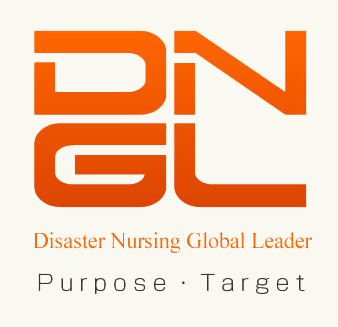The 34th Academic Conference of Japan Academy of Nursing Science (Dr. Tamura Yayoi, Chairperson) was held on November 29- 30, 2014 at the Nagoya Congress Center under the overarching theme, “Toward the Systematization of Nursing Care Science--Effective Use of Research Results in Clinical Nursing.” DNGL team conducted an interactive session focusing on the theme, “Who are Global Leaders? Who are Global Leaders in Disaster Nursing?” at the conference.
The overall characteristic of this conference was the diversity of views and global perspectives obtained from the engagement of clinicians, researchers, educators, and students in the concerned areas; yet, the interactive sessions stood out as the iconic program for this conference. There were 53 interactive sessions in total during the two days of this conference. Even though our session was the first session in the morning on the second day, a large number of people participated in lively exchange of knowledge.
In the beginning of the interactive session, DNGL program managers and representatives from the five universities announced the initiatives undertaken by each university. Current ideas and trends on “global leaders and global leaders in disaster nursing” from the perspective of each university and individual were enthusiastically shared in the order of Professor Yoshiko Sasaki from Tokyo Medical and Dental University, Professor Yumi Tamura from The Japanese Red Cross College of Nursing, Professor Misako Miyazaki from Chiba University, Professor Aiko Yamamoto from University of Hyogo, and President Hiroko Minami from University of Kochi.
There emerged an idea of leaders. The leaders, as “global citizens,” are capable of facing challenges from disasters occurring all over the world, as if those are their own problems and who always take on challenges with broader perspectives regardless of their pre-conceived ideas and narrow framework of the past. Throughout the session various questions and opinions were received: “What kind of curriculums have been formulated to cultivate such leaders,” “How is ‘the capability of viewing oneself objectively’ valued within the field of nursing studies,” “When one becomes a global leader the language problem is a huge challenge. What is being done to deal with this challenge,” “Rather than persisting with speaking beautiful English, wouldn’t it be important to create an environment that promotes the ability to communicate simply using a sequence of words,” and “What is the difference between global leaders and global leaders in disaster nursing?”
This valuable discussion session ended with responses to these questions from the five presenters, Professor Yoko Nakayama(the moderator) from University of Kochi, and Vice-president Sayumi Nojima, who further explained the endeavors of the five universities’ current initiatives and processes (although through trial and error) in the Disaster Nursing Global Leader (DNGL) Program and advancing forward together with its students.
http://www.c-linkage.co.jp/jans34/
|
HOME > report > A Report on Japan Academy of Nursing Science Interactive Sessions: Who are Global Leaders? Who are Global Leaders in Disaster Nursing?
A Report on Japan Academy of Nursing Science Interactive Sessions: Who are Global Leaders? Who are Global Leaders in Disaster Nursing? |
|
|
This program has been adopted as "Program for Leading Graduate Schools of 2012" by MEXT.
|
